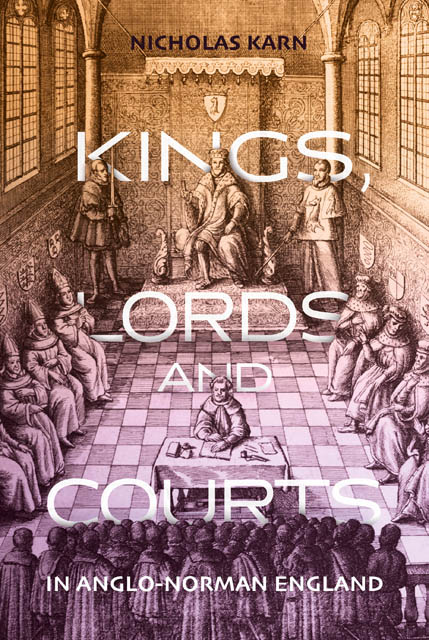Book contents
- Frontmatter
- Dedication
- Contents
- Preface and Acknowledgements
- List of Abbreviations
- Introduction
- 1 Lords and their Dependents in Court: The Later Anglo-Saxon Paradigm
- 2 The Aspirations of Lords in Eleventh- and Twelfth-Century England
- 3 Private Claims and Hundreds in the Later Eleventh and Earlier Twelfth Centuries
- 4 The Division of Hundreds and the Proliferation of Courts
- 5 From Debate within Courts to Debate between Courts: The Origins of Jurisdictional Debate
- 6 Courts, Pleas and Kings in the Early Twelfth Century
- 7 Pleas and Justices in the Early Twelfth Century
- Conclusion
- Appendix: The Evidence for Justices, 1100–54
- Bibliography
- Index
1 - Lords and their Dependents in Court: The Later Anglo-Saxon Paradigm
Published online by Cambridge University Press: 18 January 2023
- Frontmatter
- Dedication
- Contents
- Preface and Acknowledgements
- List of Abbreviations
- Introduction
- 1 Lords and their Dependents in Court: The Later Anglo-Saxon Paradigm
- 2 The Aspirations of Lords in Eleventh- and Twelfth-Century England
- 3 Private Claims and Hundreds in the Later Eleventh and Earlier Twelfth Centuries
- 4 The Division of Hundreds and the Proliferation of Courts
- 5 From Debate within Courts to Debate between Courts: The Origins of Jurisdictional Debate
- 6 Courts, Pleas and Kings in the Early Twelfth Century
- 7 Pleas and Justices in the Early Twelfth Century
- Conclusion
- Appendix: The Evidence for Justices, 1100–54
- Bibliography
- Index
Summary
This chapter has what is in principle a simple aim: to describe and to review the historiography of recent decades on how lordship was structured in later Anglo-Saxon England, and how this differed from the assumptions and practices about lordship from later eras, especially the twelfth century. The structure and practice of lordship in Anglo-Saxon England are of great importance for understanding how law was carried out and how courts were structured, because lordship was exercised through or in relation to courts, and the claims of lords and their dependents were defined there. Lordship, law and courts acted in concert, where the forms of each had an effect upon the others. Later Anglo-Saxon lordship was complicated, and came in different varieties, in which lordships over any one individual might be owed to different lords. The distinctive quality of later Anglo-Saxon lordship has long been described in the historiography, and that understanding has been expanded in some important and influential studies. Much of that historiography has been based upon the data presented in Domesday Book, and so covers the decades around that work in greatest detail. There have, however, been convincing recent studies that have argued that the tenth and eleventh centuries comprised a period in which the relationships between kings and lords, between royal authority and local power structures, changed markedly, and in which new terms and concepts appeared to describe those relationships. Lordship is thus not a simple matter to describe, for it was a fluid, developing web of relationships. The presentation of thinking of lordship here works backwards. It starts with the reasonably clear pattern that can be detected in Domesday Book, where three distinct kinds of lordship can be discerned. It then moves on to the evidence for lordship that can be seen in the laws, which describe arrangements before those in Domesday Book, and before the posited changes in the relationship between kings and lords of the earlier eleventh century. The laws were not specifically written about lordship, but contain numerous observations, instructions and implications that bear upon it. They contain many points that match the arrangements in Domesday Book, but there are many matters in that later source that are not present in most of the laws, such as soke.
- Type
- Chapter
- Information
- Kings, Lords and Courts in Anglo-Norman England , pp. 28 - 50Publisher: Boydell & BrewerPrint publication year: 2020



